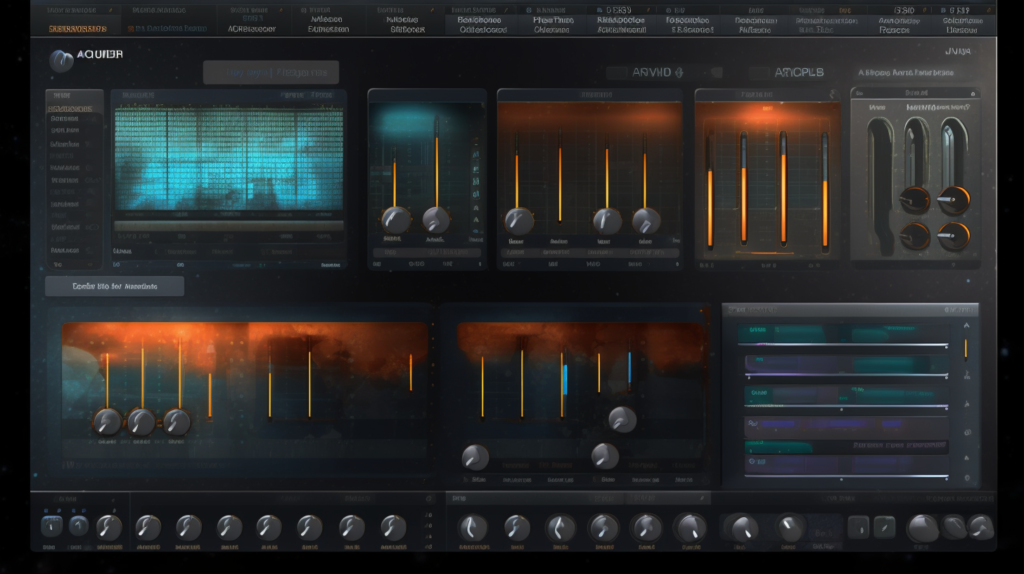
Welcome to our comprehensive guide on creating a Drake type beat. If you’re a music producer looking to replicate that signature sound, you’ve come to the right place! Throughout this tutorial, we’ll be diving into the essential elements of a Drake type beat, from drum patterns to melodies, to help you nail that distinctive vibe.
Understanding the Basics of a Drake Type Beat
Drake type beats are known for their moody, atmospheric soundscapes, characterized by spacious melodies and hard-hitting drum patterns. While there are many ways to approach beat production, we’ve identified a few key aspects that contribute to the Drake type beat sound:
- Drum Patterns: Slow, heavy-hitting drums that emphasize space and depth.
- 808s: Deep, rumbling basslines that drive the rhythm.
- Melodies: Atmospheric, often haunting melodies that evoke emotion.
- Beat Elements: Creative use of sound effects, textures, and sampling to add dimension and complexity.
Crafting Your Drum Patterns
The foundation of any Drake type beat is the drum pattern. Slow, heavy-hitting drums create the perfect backdrop for moody melodies and rumbling 808s. Let’s explore some tips for constructing drum patterns that evoke that signature sound:
- Tempo: Aim for a tempo between 70-90 BPM to capture the slow, brooding feel of a Drake type beat.
- Kicks: Choose a punchy, low-frequency kick that cuts through the mix.
- Snares: Opt for a crisp, tight snare that snaps on the 2nd and 4th beat of the bar.
- Hi-hats: Use sparse, rhythmic patterns to create a sense of space and depth.
- Percussion: Experiment with additional percussion elements, such as claps, rims, and shakers, to add variety and interest to your beat.
Nailing the 808s
The 808 bassline is a crucial element of the Drake type beat sound. A powerful, rumbling bassline drives the rhythm and adds depth to your production. Here’s how to get it right:
- Tuning: Ensure your 808s are in tune with the rest of your beat elements to maintain harmonic cohesion.
- Distortion: Add subtle distortion to help your 808s cut through the mix and stand out.
- Sidechain Compression: Apply sidechain compression to your 808s, linking it to your kick drum to create a cohesive, rhythmic relationship.
- Timing: Experiment with syncopation and off-beat placement to create interesting, dynamic basslines that complement your drum patterns.
Crafting Atmospheric Melodies
Captivating, atmospheric melodies are a hallmark of Drake type beats. To create these emotive melodies, follow these detailed steps:
- Scale Selection: To achieve a dark and moody feel, work with minor scales such as the natural minor, harmonic minor, or even the Dorian mode. These scales provide a somber foundation for your melodies.
- Sound Selection: Choose spacious, atmospheric sounds that create an expansive sonic landscape. Opt for instruments like pads, strings, pianos, or even ethereal synths. Experiment with layering different sounds to develop a rich, textured ambience.
- Reverb and Delay: Apply reverb and delay effects to your melodic elements, which will enhance the sense of space and depth in your beat. Use longer decay times and higher wet signals for a more immersive atmosphere, but be cautious not to drown out your melody.
- Counter Melodies: Introduce counter melodies to add complexity and maintain listener engagement throughout the track. Counter melodies can be simple, complementary phrases or rhythmic patterns that work in harmony with your main melody. They can even be created using different instruments to diversify your beat’s sonic palette.
- Rhythmic Variation: Experiment with varying rhythmic patterns, note lengths, and syncopation within your melodies. This will keep your beat dynamic and prevent it from becoming monotonous.
Adding Texture and Dimension with Beat Elements
Incorporating creative beat elements such as sound effects, textures, and sampling can elevate your Drake type beat, giving it depth and originality. Dive deeper into these aspects with the following tips:
- Ambient Sounds: Integrate background noises like rain, wind, vinyl crackle, or cityscapes to create a rich, immersive atmosphere. These sounds can be subtly introduced into your mix, adding an extra layer of depth and texture.
- Sampling: Experiment with a variety of samples, including vocal chops, movie dialogue, or obscure musical snippets. Use these samples to add intrigue and originality to your beat, while ensuring they complement the overall mood and atmosphere. Manipulate the samples with effects like pitch shifting, time stretching, or filtering to make them unique.
- Sound Design: Employ creative sound design techniques to further shape your beat elements. Use audio effects like filtering to remove unwanted frequencies or boost specific elements, pitch shifting to change the character of your samples, and modulation effects like chorus or flanger to add movement and depth.
- Arrangement: Thoughtfully arrange your beat elements to create a sense of progression and storytelling. Consider starting with a sparse intro, then gradually introduce new elements, building tension and complexity. Use breakdowns and transitions to create moments of release and keep the listener engaged.
- Mixing: Pay close attention to your mix, ensuring each element has its own space within the frequency spectrum. Use EQ to carve out room for competing elements, apply stereo widening techniques to create depth, and adjust levels to maintain a balanced mix that highlights the key components of your Drake type beat.
By incorporating these advanced techniques and paying close attention to detail, you’ll be well on your way to crafting an atmospheric, dynamic Drake type beat that stands out from the rest.
Cheatsheet for Producers
| Aspect | Tips |
|---|---|
| Drum Patterns | Tempo: 70-90 BPM; Punchy kicks; Crisp snares; Sparse hi-hats; Varied percussion |
| 808s | Tune; Add subtle distortion; Use sidechain compression; Experiment with timing |
| Melodies | Utilize minor scales; Select atmospheric sounds; Apply reverb and delay; Create counter melodies |
| Beat Elements | Incorporate ambient sounds; Experiment with sampling; Employ creative sound design |
Now that you’ve learned the key components of a Drake type beat, it’s time to apply these techniques to your own music production. Remember, practice makes perfect – so get in the studio and start crafting that signature sound today!





